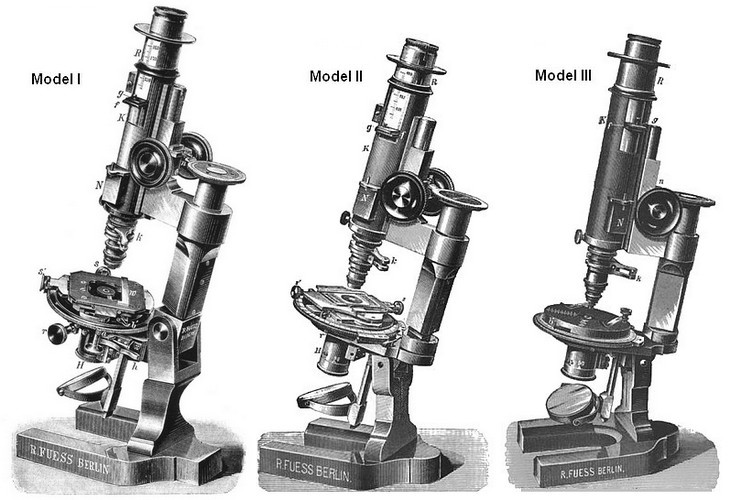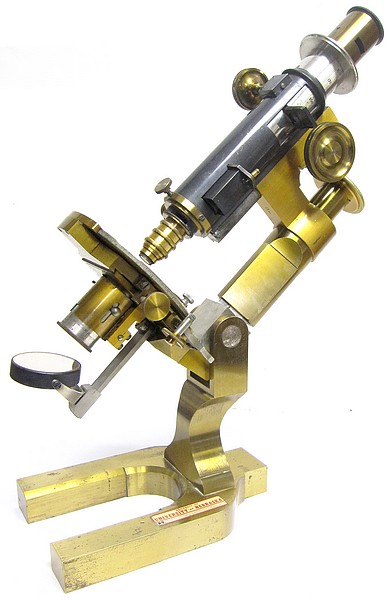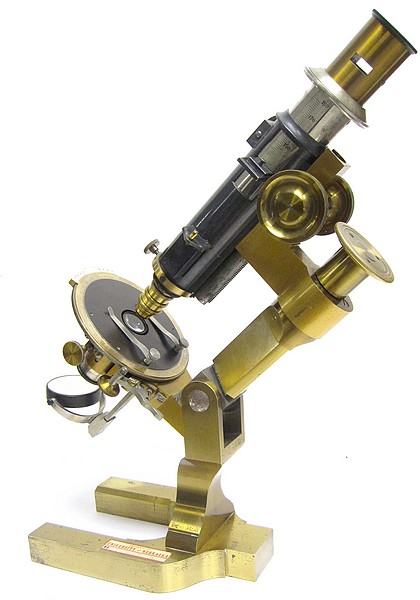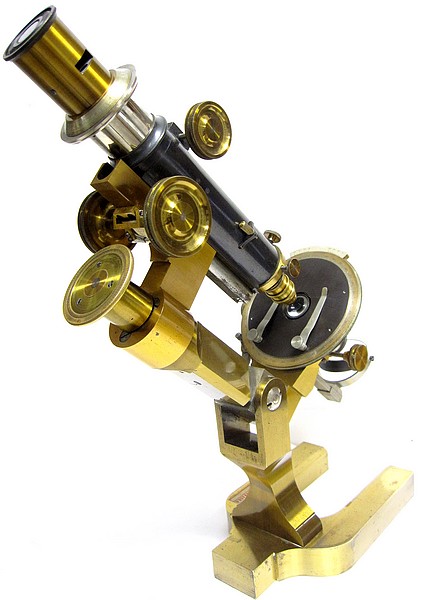
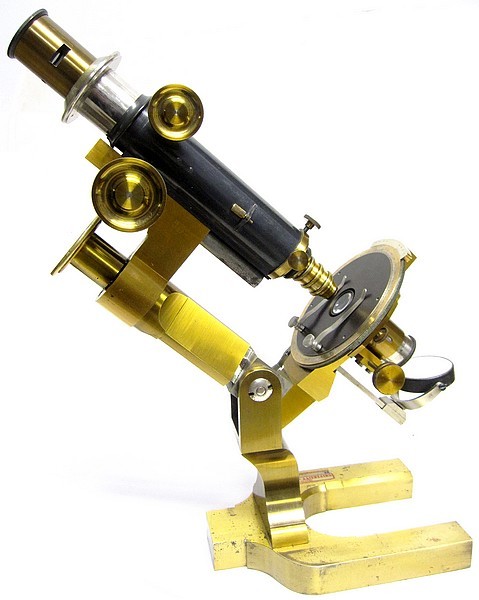
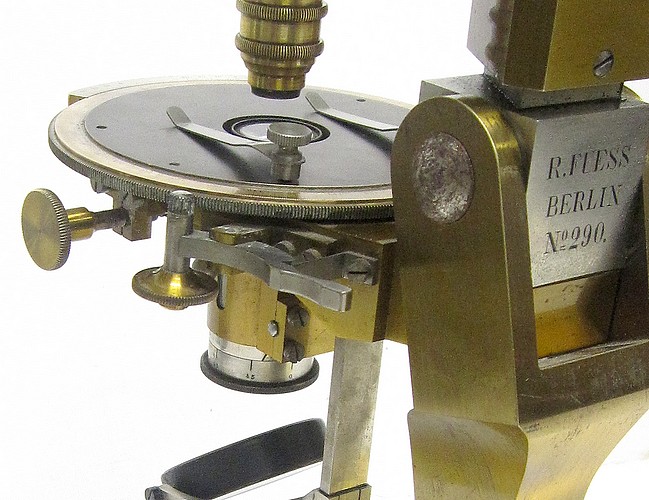
Note that the stage can be rotated by hand or by a pinion operating on the circular rack located along the rim of the stage.
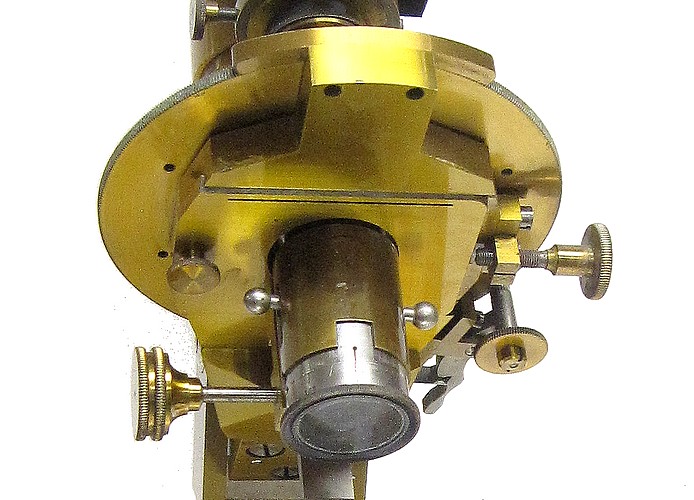
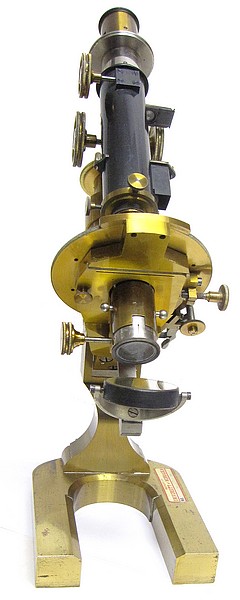
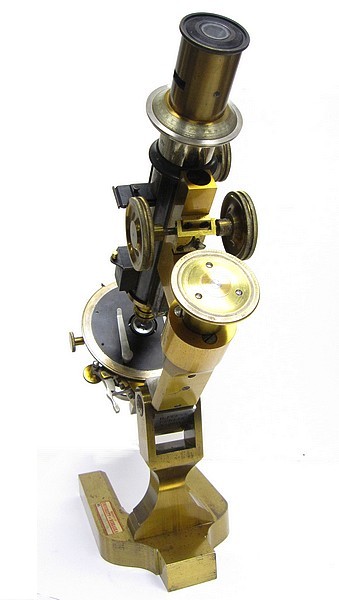
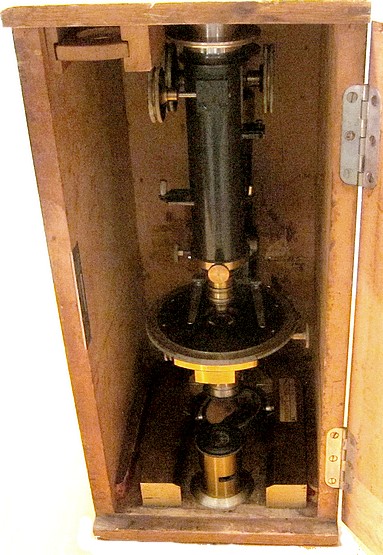
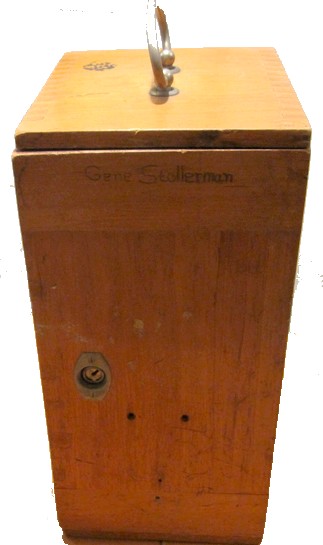
The storage case is a replacement.
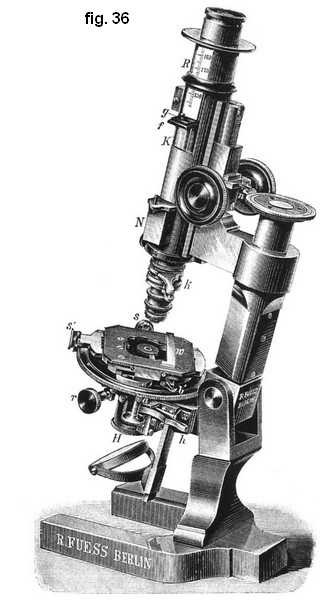
This microscope is constructed in brass with lacquered, black enameled, and nickel plated finishes. It measures about 14 inches in height as shown inclined in the first image. In the 1890 Fuess catalog, this was called the Large Microscope No.1. It is somewhat more massive than the No.2 and No.3 models of similar vintage and has a few additional refinements.
This model was described in the Journal of the Royal Microscopical Society 1891 pg. 393 as follows:
Fuess’s Petrological and Crystallographic Microscopes.— Herr R. Fuess has introduced several improvements into his Petrological Microscope, which now has the form given in fig. 36. The object-stage is fitted for fine measurements. The scale is graduated in half degrees and two verniers read to minutes. The stage-plate has a toothed edge and is rotated by means of a pinion a, which can be thrown out of gear by the lever h. A mechanical stage is applied on the rotating stage-plate. By one of the rectangular movements effected by the screw S an interval of 0.01 mm. can be indicated. The other screw S' has a more rapid thread to enable the preparation to be quickly passed across the field of view. The mirror slides vertically on an arm which can be rotated to one side. The polarizer has a rack and pinion movement. A conical stop fitting into corresponding slots in the socket determines the position of the Nicol for 0°, 45°, and 90°. An iris-diaphragm can be inserted beneath the Nicol. A condensing lens of great focal length attached to the polarizer serves for the illumination of the preparation when the lower objectives are used. This lens forms the lower member of the condensing system, which consists of three lenses, the other two being connected together but detached from the polarizer. the common socket of the two upper lenses is supported in a ring which forms the end of the arm b of a rotating plate fitted in the object-stage. By means of a weak spiral spring in the ring-holder, the socket follows the movement of the polarizer, so that the whole condensing system can be adjusted by the pinion which effects the movement of the polarizer. By a second arm b' from the rotating plate of the lens-holder, the upper pair of lenses can be moved to one side beneath the mechanical stage, so that the change from convergent to parallel light and vice versa can be rapidly effected without moving the preparation.
The coarse-adjustment of the Microscope is by rack and pinion. The fine-adjustment screw has a pitch of 0.5 mm. The head is divided into 100 parts, and a vernier reads to a fifth of a division, i.e.. to 0.001 mm. The end of the body-tube carrying the objective is movable by two fine screws for centering. To facilitate the change of objectives, the latter are not screwed on, but held by the clamp k. Immediately above the clamp is a slit for the introduction of a Klein’s plate, quarter-wave plate, &e. The analysing Nicol N is inserted in a wider opening at the lower end of the body-tube. Another opening K serves for the introduction of the auxiliary objective into the draw-tube R. The lens is fastened in the slide f, and forms with the Ramsden eye-piece a complete Microscope, with a magnification of about five times. This constant magnification is advantageous for measuring the apparent optic axial angle. The draw-tube carries a millimetre scale which gives the distance of the eye-piece from the objective. Among the accessories of the Microscope are the illuminating apparatus and spectropolarizer of Abbe, the twin-Nicol for stauroscopic measurements, and the illuminating arrangement of Sorby which serves for the observation of the internal and external conical refraction.
Of the special eye-pieces, the goniometer eye-piece consists of a Ramsden eye-piece which is directed upon cross wires centered by four adjusting screws exactly in the axis of a divided circle.
The description of the Model No.1 from the 1890 Fuess catalog
The storage case now with this microscope is a replacement. The only accessories it has remaining are those now attached to the microscope. This model was supplied either with or without a mechanical stage. This particular example was supplied only with stage clips. It also came supplied with a goniometer analyzer that mounts above the eyepiece; this is in addition to the analyzer that is mounted in the tube.
Attached to the base of the microscope is an inventory label from the University of Nebraska (founded in 1869). Evidently, this instrument was used during the earlier years of that institution.
